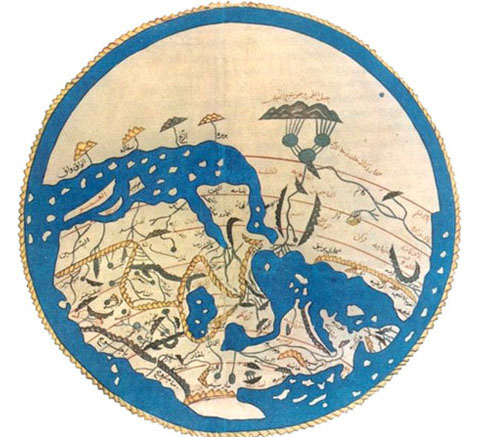Article of the Month - November 2020
“The Rise and Fall of Viticulture in the Late Antique Negev Highlands Reconstructed from Archaeobotanical and Ceramic Data”
(Daniel Fuks: Ph.D. Candidate, Bar-Ilan University, et al.)
Daniel Fuks, et al., “The Rise and Fall of Viticulture in the Late Antique Negev Highlands Reconstructed from Archaeobotanical and Ceramic Data.” Proceedings of the National Academy of Sciences of the United States of America 117 (2020):19780-19791.
Article Abstract:
The international scope of the Mediterranean wine trade in Late Antiquity raises important questions concerning sustainability in an ancient international economy and offers a valuable historical precedent to modern globalization. Such questions involve the role of intercontinental commerce in maintaining sustainable production within important supply regions and the vulnerability of peripheral regions believed to have been especially sensitive to environmental and political disturbances. We provide archaeobotanical evidence from trash mounds at three sites in the central Negev Desert, Israel, unraveling the rise and fall of viticulture over the second to eighth centuries of the common era (CE). Using quantitative ceramic data obtained in the same archaeological contexts, we further investigate connections between Negev viticulture and circum- Mediterranean trade. Our findings demonstrate interrelated growth in viticulture and involvement in Mediterranean trade reaching what appears to be a commercial scale in the fourth to mid-sixth centuries. Following a mid-sixth century peak, decline of this system is evident in the mid- to late sixth century, nearly a century before the Islamic conquest. These findings closely correspond with other archaeological evidence for social, economic, and urban growth in the fourth century and decline centered on the mid-sixth century. Contracting markets were a likely proximate cause for the decline; possible triggers include climate change, plague, and wider sociopolitical developments. In long-term historical perspective, the unprecedented commercial florescence of the Late Antique Negev appears to have been unsustainable, reverting to an age-old pattern of smaller-scale settlement and survival-subsistence strategies within a time frame of about two centuries.
Nomination Statement:
What I love about this study is the way it uses literally microscopic examination of the material vestiges of a local Mediterranean ecology to shed light on the economy of the whole Mediterranean in late antiquity. By taking the ‘everyday luxury’ of wine, and tracing it from cultivation in the Negev highlands to distribution right across the region, Fuks and his co-authors shed light on a host of controversial topics: the effectiveness of high aggregate demand, so that it was profitable for a time to bring marginal arid areas under cultivation; the geography of essential irrigation techniques; the role of the state as against individual enterprise in the trade of the fifth to sixth centuries; and above all the factors in the decline of this pan-Mediterranean commerce – political, social, environmental. Naturally there is much archaeological detail – 10,000 charred cereal grains and grape pips that had to be counted, large quantities of pigeon dung (for manuring), and the staple of pottery fragments; but there is also deft use of literary and visual evidence. And an eye is always kept on the bigger picture, so that we have here a contribution not only to the history of viticulture in the eastern Mediterranean, but to the histography of plague and climate change, and the effects of the Islamic conquests.
Author’s Comment:
Thirty-five years ago, Phillip Mayerson suggested that the Negev Highland desert may have been a source for the widely acclaimed “Gaza wine” of Byzantine Palestine. This luxury wine was exported from Gaza throughout the Mediterranean and beyond in characteristic amphorae now known as “Gaza Jars”. The very existence of a Mediterranean wine trade whose expanding influence effected a greening of the desert, seems to support a market-oriented, modernist view of the ancient economy, although questions remain on who controlled the flow of goods and capital. Meanwhile, its floundering in the mid-7th c. CE concomitant with the rise of Islam, as assumed by Mayerson and others, supports a Pirennean paradigm of Late Antiquity. However, the scant textual references to Negev viticulture and the few large winepresses uncovered in local excavations which were known to Mayerson thirty-five years ago provided insufficient proof of commercial-scale viticulture in the Negev. Nor did they sufficiently delimit its temporal boundaries to enable any evaluation of their relationship to Mohammed and Charlemagne. The relevant dataset on Negev viticulture remained essentially unchanged for the next thirty-five years. This year, our quantitative study of new archaeobotanical and ceramic data provides the first empirical evidence for commercial-scale viticulture in the Negev, its chronological boundaries, and its connection to Mediterranean trade. The study used changing ratios of grape pips and cereal grains as an index for the intensity of viticulture over the first eight centuries CE at three Negev Highland sites. The results indicated that local viticulture developed into a commercial-scale enterprise during the 4th–mid 5th c., peaking in the mid 6th c. The same trend was observed in the ratio of Gaza Jar sherds to the less-mobile Bag-shaped Jars, suggesting that the developments in local viticulture were linked to Mediterranean trade. The timing of Negev viticulture’s decline in the mid-late 6th c. debunks implication of Islam. Rather, it corresponds with a turbulent empire-wide period of pandemic in the form of Justinianic plague, climate change in the form of the Late Antique Little Ice Age, and socio-political turmoil associated with the end of the Justinianic Age. We argue that each and all of these could have acted as triggers, exposing inherent vulnerabilities in the peripheral Negev economy to contracting markets. The success of agricultural intensification in an arid desert, as represented by Byzantine Negev commercial-scale viticulture, is a truly impressive feat. Yet its decline provides an early precedent for increased vulnerability to challenges like plague and climate change in a globalized economy.
Would you like to discuss this article?
Start a thread on the Mediterranean Seminar list-server
See the other Articles of the Month here.
